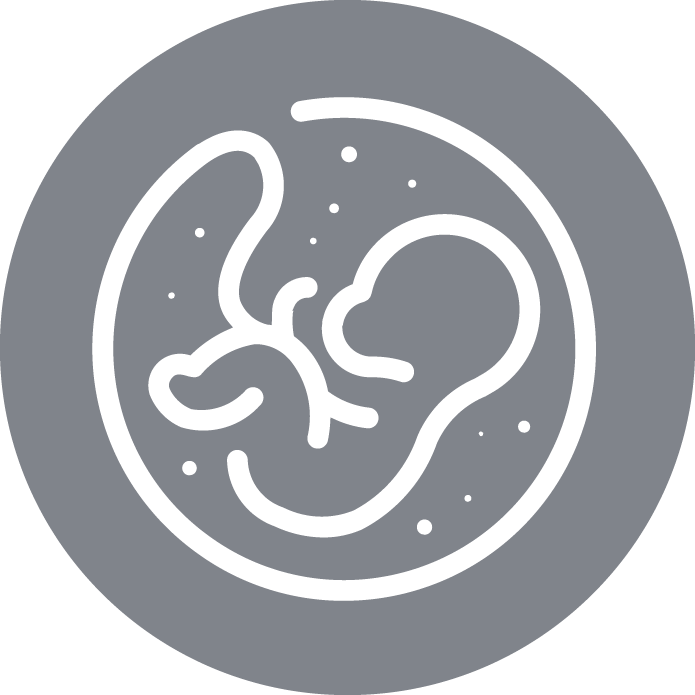Natural cycle associated with fewer obstetric complications
In the field of reproductive medicine, frozen embryo transfer (FET) techniques have evolved significantly. One strategy gaining increasing attention is the use of the natural cycle as an alternative to hormone replacement therapy (HRT). This trend was highlighted during the 10th National Meeting of Special Interest Groups of the Spanish Fertility Society (SEF), held in Valencia, where the Special Interest Group in Reproductive Endocrinology (GIER) presented the latest findings and clinical insights.
Natural Cycle Modalities: Physiology and Process Monitoring
Dr. Estefanía Abanto (IVI Bilbao) opened the session with a detailed analysis of the different natural cycle modalities for frozen embryo transfer:
- True Natural Cycle (tNC): This is the most physiological option, with no pharmacological induction of ovulation. While it minimizes hormone exposure, it poses scheduling limitations and requires more frequent ultrasound monitoring to detect the LH surge.
- Modified Natural Cycle with hCG (mNC): This allows for controlled ovulation induction, offering greater scheduling flexibility. As explained by Dr. Alicia Pérez Calvo (IVI Madrid), the hCG trigger is typically administered when the endometrial lining measures ≥7 mm and the dominant follicle is between 13 and 22 mm in diameter.
- Natural Proliferative Phase: An intermediate protocol where progesterone is started once the follicle reaches 16 mm and the endometrium is at least 7 mm thick. It does not require an hCG trigger, although its timing window is narrower.
Obstetric Benefits and Lower Complication Rates
One of the most striking statements came from Dr. Abanto, who emphasized that “natural cycle, compared to cycles with hormone replacement therapy (HRT), is associated with better obstetric outcomes and lower complication rates, possibly due to the physiological role of the corpus luteum and its secretion of relaxin.” This supports the growing preference for less invasive protocols, where clinically appropriate.
Luteal Phase Support: Is Progesterone Necessary?
The need for luteal phase progesterone supplementation in natural cycles remains a topic of debate. While approximately 8% of patients may exhibit luteal phase deficiency, no significant differences have been found in clinical pregnancy or live birth rates based on the use of exogenous progesterone. There is still no consensus on the ideal route, dosage, or duration of progesterone supplementation.
In this regard, both the mNC and the natural proliferative phase protocols have proven efficient not only clinically but also organizationally, as they help avoid weekend ultrasounds and transfers—thereby optimizing IVF lab workflows.
PPOS: Progestin-Primed Ovarian Suppression as an Effective Alternative
Dr. María Cerrillo (IVI Madrid) presented a comprehensive review of the PPOS (Progestin-Primed Ovarian Stimulation) protocol, an effective alternative to traditional GnRH analogs for preventing premature LH surges. This protocol is particularly useful in cases of:
- Fertility preservation
- Oocyte donation
- Poor ovarian responders
- Cycles where fresh transfer is not planned
Dr. Cerrillo highlighted that “the PPOS protocol for ovarian suppression is a flexible, simple, effective, and safe alternative to prevent premature LH surge during controlled ovarian stimulation in cycles without planned fresh embryo transfer.”
Moreover, progestin treatment allows for more precise cycle scheduling, reduces the need for frequent monitoring, and better aligns with routine clinical workflows for both patients and professionals.
Future Research: Mitochondrial Metabolism and Biomarkers
The GIER experts agreed that one of the most promising research fields will be the impact of different progestins on mitochondrial metabolism. The aim is to determine whether early biomarkers of oocyte quality could be identified during progestin-based stimulation—potentially leading to more precisely personalized treatment strategies.
The use of natural cycles for FET and progestin-based ovarian stimulation represents a significant step towards reproductive medicine that is more respectful of female physiology—without compromising clinical effectiveness. As research continues to deepen in these areas, treatment personalization will become even more refined.
Educational platforms like IVIRMA Global Education promote up-to-date, evidence-based knowledge in areas such as reproductive endocrinology, luteal support, and advanced stimulation strategies.
“Natural cycle, compared to cycles with hormone replacement therapy (HRT), is associated with better obstetric outcomes and lower complication rates, possibly due to the physiological action of the corpus luteum and its secretion of relaxin.”
Interested in specializing in reproductive endocrinology and stimulation protocol optimization?



